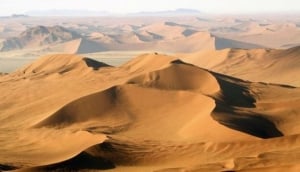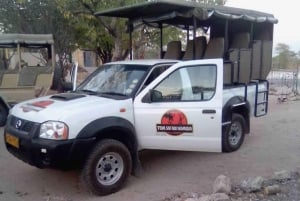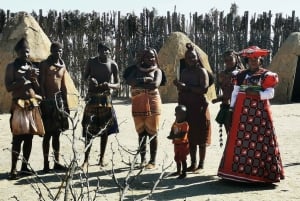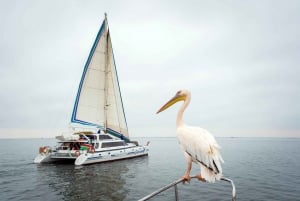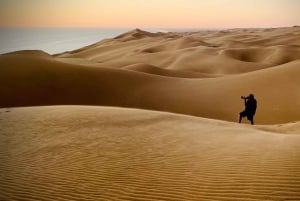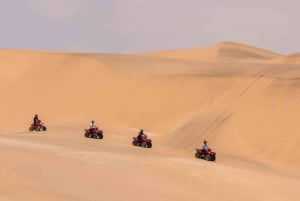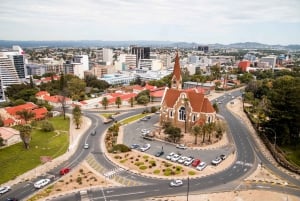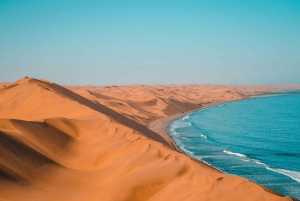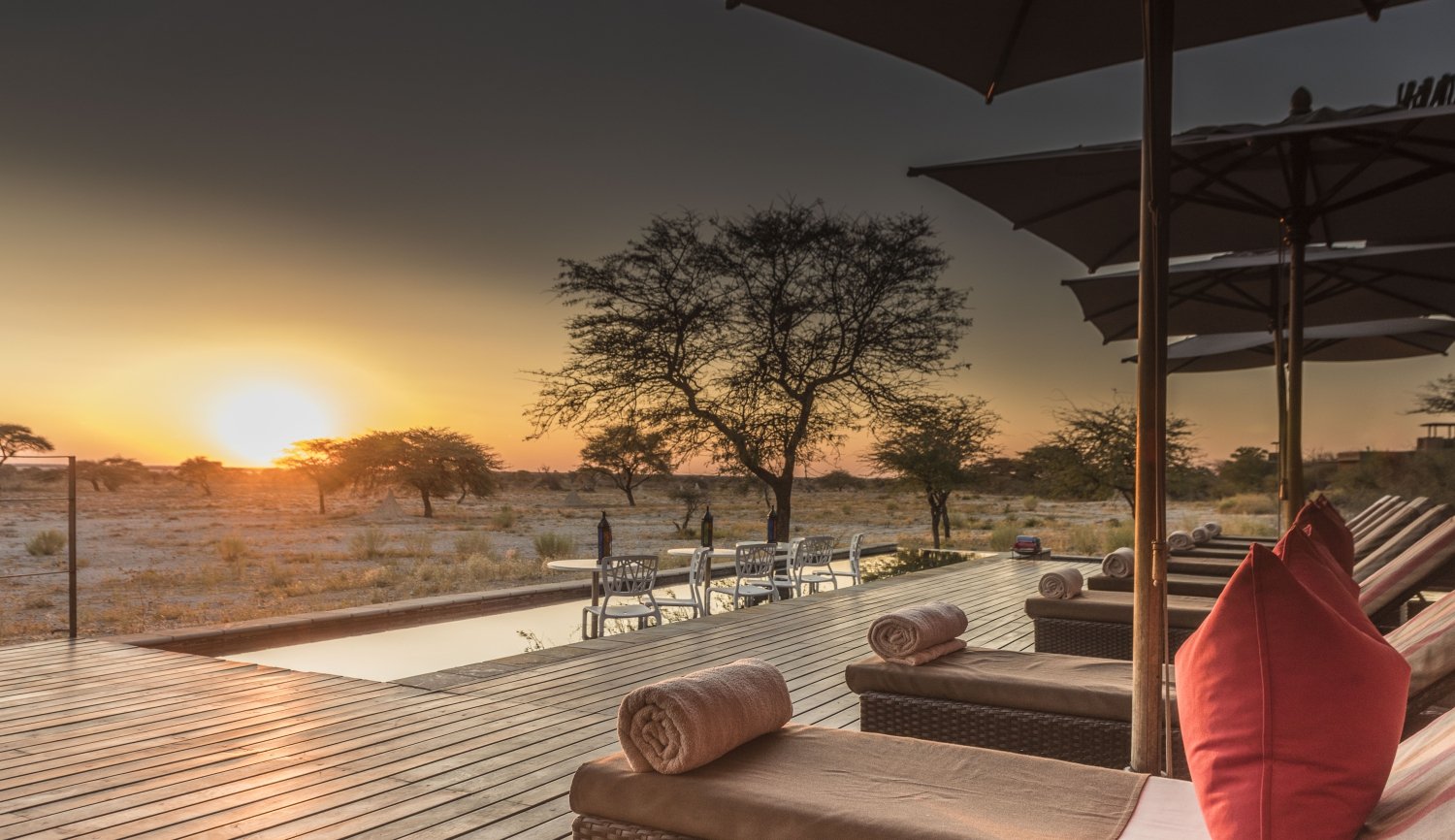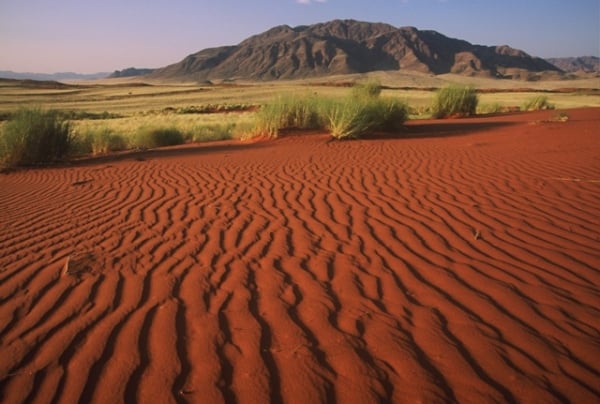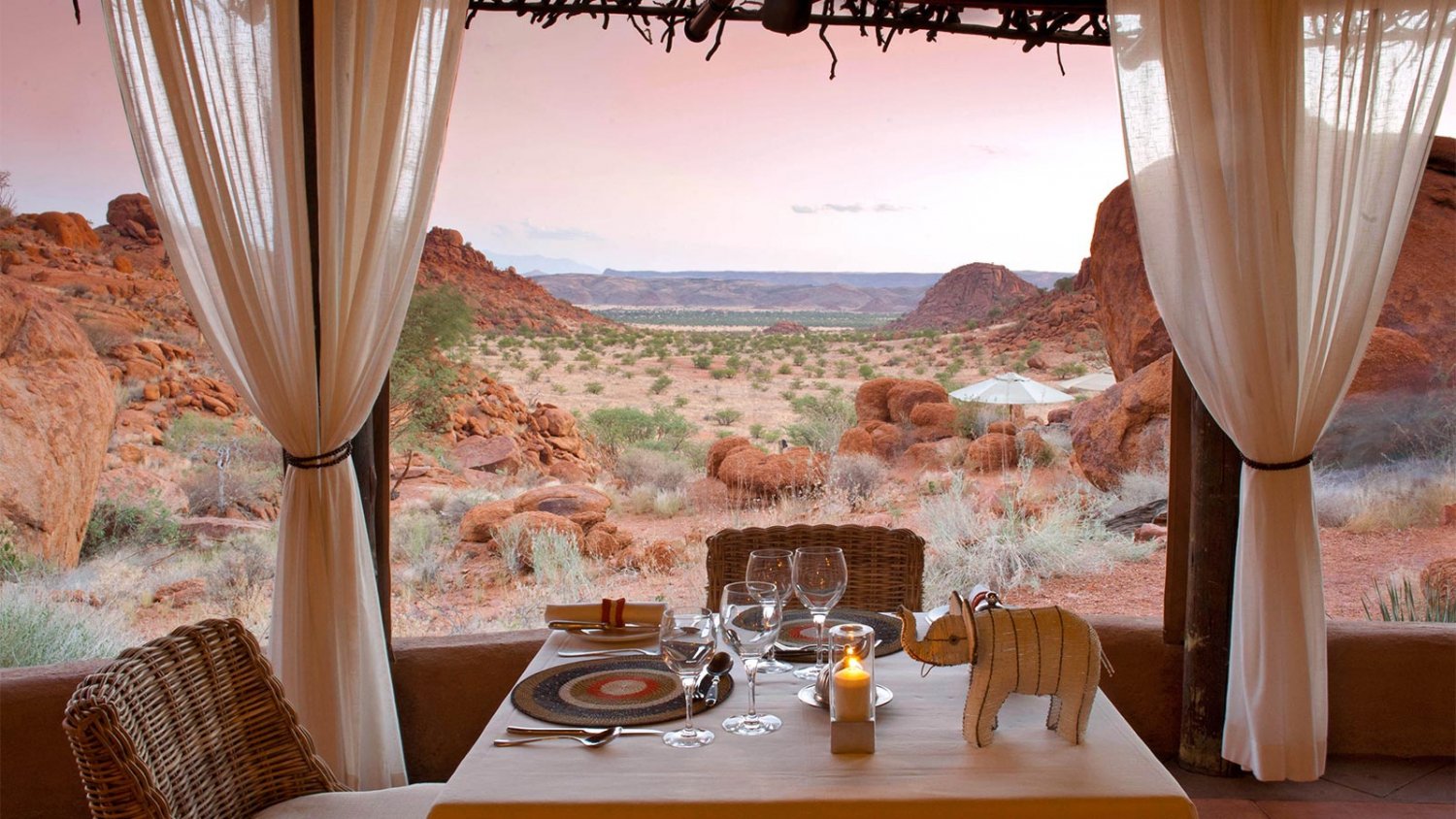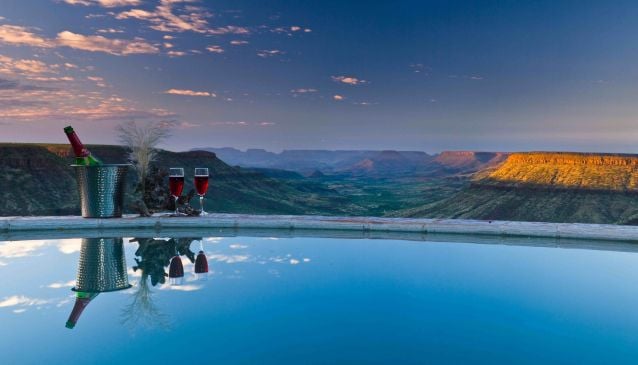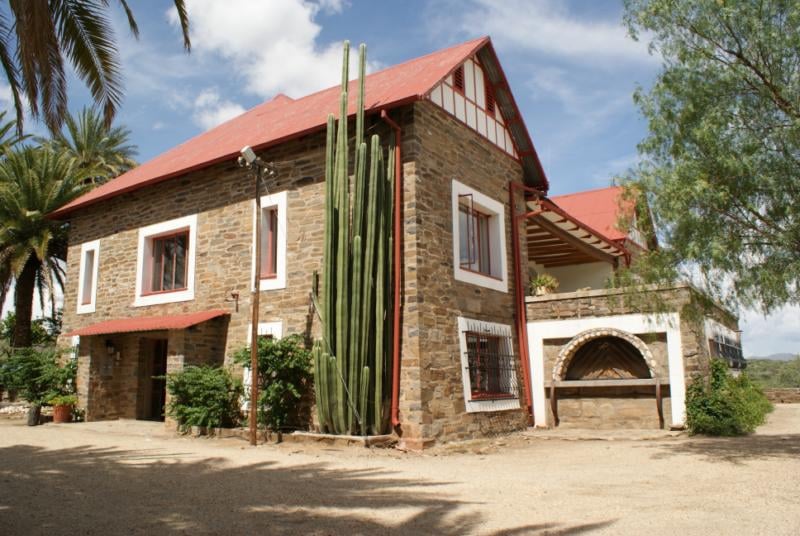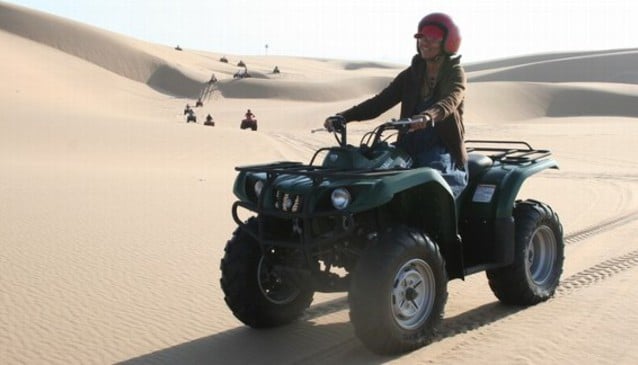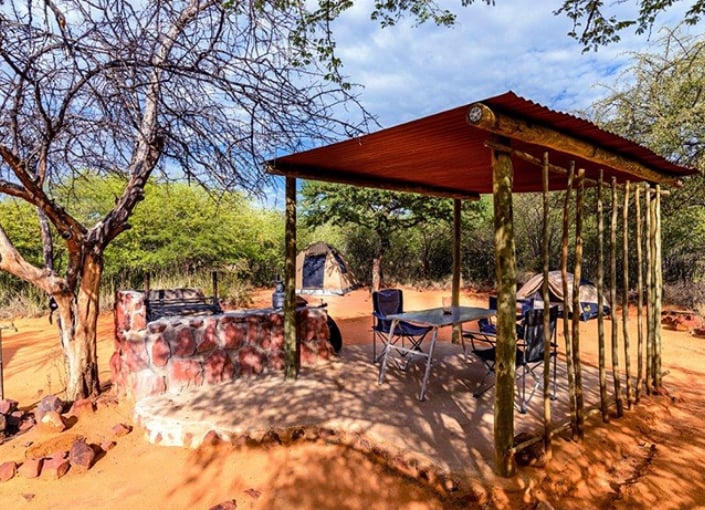The Namib Desert
The Timeless Majesty of the Namib Desert: A Journey Through Namibia's Ancient Landscape
Book Top Experiences and Tours in Namibia:
If youʻre booking your trip to Namibia last minute, we have you covered. Below are some of the top tours and experiences!- Etosha National Park: Full or Half-Day Game Drive
- Walvis Bay: Mondesa Township Tour
- Walvis Bay: Marine Big 5 Luxury Catamaran Tour
- Walvis Bay: Sandwich Harbour Sunset Photography Tour
- Swakopmund: Desert Dunes Quad Biking with Optional Sandboard
The Namib Desert is a large expanse of moving gravel plains and dunes of all shapes and sizes that span along the entire coastline. The most dominant type of dune are linear dunes, followed by crescent-shaped dunes which are more common along the coast, and clusters of star-shaped dunes prevailing more in the Sossusvlei area in the eastern part of Namibia. The entire western part of Namibia is comprised of the desert which flows beyond the borders of Namibia into southern Angola and also to the northern Cape Province of South Africa.
A Geological Masterpiece
The Namib Desert's striking geological features are among its most iconic attractions. The towering sand dunes, some reaching heights of over 300 meters, are the tallest in the world. The most famous of these, Dune 45, draws adventurers who rise before dawn to climb its orange slopes and witness the desert bathed in golden sunlight.
Beyond the dunes, the Skeleton Coast stretches northward—a haunting shoreline where the Atlantic Ocean meets the desert's arid expanse. Named for the shipwrecks and whale bones scattered along its length, the Skeleton Coast is a place of desolate beauty and rich maritime history. Further inland, gravel plains and rugged mountains reveal the region's geological evolution, a testament to the slow, unyielding forces of nature.
Part of the desert, towards the center, incorporates the Namib-Naukluft Park, which is the largest park in Namibia and also the third largest in Africa. The park today is a combination of the Namib Desert Park and the Naukluft Mountain Zebra Park, as well as sections of the Diamond Area. The combination of all these areas adds up to about 50,000 square kilometers. The Naukluft Mountain area was initially created as a sanctuary for the Hartmann's mountain zebra.
Flora and Fauna: Life Against the Odds
Despite its harsh conditions, the Namib Desert supports a surprising array of life. Adaptations to extreme aridity define the species that call this desert home. One of the most extraordinary is the Welwitschia mirabilis, a living fossil that can survive for over 1,000 years, drawing moisture from morning fog.
It takes a lot for any kind of vegetation to survive in the harsh climate of the desert. The wildflowers that sprout in the Namib can be categorized into three regions: the southern Namib, the central Namib, and the northern Namib. The southern Namib, characterized by winter rainfall, falls into the northernmost extension of the Succulent Karoo biome of southern Africa and is home to over 600 plant species. The central Namib, bounded by the Atlantic Ocean and the escarpment, supports about 400 species, while the northern Namib boasts approximately 1,000 species of plants. Possibly the most popular and well-known plants in the Namib Desert are the !nara plant and the Welwitschia mirabilis.
Rainfall in the desert is erratic and can only occur when warm, moist air is blown onto the eastern side of the African subcontinent by southeast trade winds. It is highly seasonal and coincides with weak South Atlantic cyclone activity.
The desert is also home to the oryx (gemsbok), a symbol of Namibia, known for its striking horns and ability to endure heat. Other resilient inhabitants include the elusive desert-adapted elephants of the Kunene Region and the Namaqua chameleon, which changes color to regulate body temperature. Other critters that can also be found in the desert include reptiles such as lizards, geckos, the sand snake, the side-winding adder, scorpions, spiders, fish-moths, and beetles. Birds such as the Herero chat, Karoo lark, Karoo scrub robin, cinnamon-breasted warbler, honeyguide, pearl-spotted owlet, rockrunner, black-backed canary, and Monteiro's hornbill can be found toward the southern limits of Damaraland and the northern areas of the Karoo. The fog-shrouded coastal areas sustain colonies of Cape fur seals, while predators like brown hyenas and jackals patrol the sands in search of food.
Cultural Echoes of the Namib
There is evidence of humans living in the Namib Desert extending back to the early Stone Age era. However, the most documented mark of human existence can still be seen in the various rock paintings, stone circles, tools, and pottery that have been discovered over the years. The most popular and well-known rock paintings can be found at Brandberg and Twyfelfontein. Twyfelfontein, a UNESCO-listed site, contains one of the largest concentrations of petroglyphs in Africa. These engravings depict animals, human figures, and spiritual symbols, offering insight into the spiritual lives of the desert's earliest inhabitants.
The Topnaar are a well-known clan that resides in the Namib Desert. Colonial history also left its mark on the Namib. The ghost town of Kolmanskop, once a thriving diamond mining settlement, now stands as a testament to human ambition and nature's reclaiming power. Sand-filled buildings and fading relics create an eerie yet fascinating window into Namibia's early 20th-century diamond rush.
Adventure and Exploration
Modern adventurers find no shortage of experiences in the Namib Desert. Sossusvlei, a salt and clay pan surrounded by red dunes, remains one of the most photographed landscapes in the world. Visitors can explore Deadvlei, where ancient, desiccated camel thorn trees stand as stark silhouettes against the white pan and crimson dunes. Other attractions in the area include Hidden Vlei and the Swakop and Kuiseb River Canyons.
Popular tourist destinations in the Namib Desert include the NamibRand Nature Reserve, the coastal town of Luderitz, the ghost town of Kolmanskop, Africa's largest canyon—Fish River Canyon, the Cape fur seal colony at Cape Cross, the Orange River, and the Skeleton Coast. Scenic flights are a popular activity, offering visitors a unique bird's-eye view of the desert's splendor.
Accommodation options in the Namib Desert are abundant. Notable lodges and camps include Agama River Camp, Betesda Rest Camp, Desert Camp, Desert Homestead, Hoodia Desert Lodge, Kulala Desert Lodge, Le Mirage Desert Lodge & Spa, Little Kulala, Moon Mountain Lodge, Namib Desert Lodge, Sesriem Campsite, Sossus Dune Lodge, Sossusvlei Desert Lodge, and many more.
Conservation and the Future
The Namib Desert's fragile ecosystem faces challenges from climate change and human encroachment. Conservation efforts are critical to preserving its biodiversity. Namibia's commitment to sustainable tourism and community-based conservation has led to the establishment of vast protected areas, including the Namib-Naukluft National Park—the largest game park in Africa.
Organizations like the Namibian Coast Conservation and Management Project (NACOMA) work to balance economic development with environmental stewardship. Local communities play a vital role in conservation initiatives, ensuring that the Namib's natural and cultural heritage endures for future generations.
Conclusion
The Namib Desert is more than a barren expanse—it is a living, breathing testament to resilience and timeless beauty. From its towering dunes and ancient flora to the rich cultural tapestry woven through its history, the Namib captivates all who venture into its embrace. As Namibia strides toward a future of sustainable development, the desert remains a reminder of nature's power and the enduring spirit of life against the odds.



